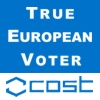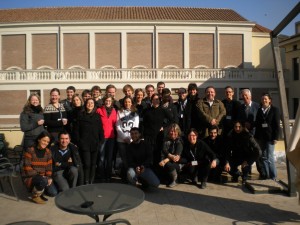 Un pieno successo la terza edizione della Winter School “Methodological Issues in Comparative Electoral Analysis” organizzata dal progetto “The True European Voter” finanziato dalla European Science Foundation. Questa edizione è stata ospitata a Roma, presso il Dipartimento di Scienze Politiche della LUISS, con l’organizzazione locale a cura del CISE. Dal 6 al 9 febbraio 2012, la Winter School ha coinvolto 35 studiosi da numerosi paesi europei .
Un pieno successo la terza edizione della Winter School “Methodological Issues in Comparative Electoral Analysis” organizzata dal progetto “The True European Voter” finanziato dalla European Science Foundation. Questa edizione è stata ospitata a Roma, presso il Dipartimento di Scienze Politiche della LUISS, con l’organizzazione locale a cura del CISE. Dal 6 al 9 febbraio 2012, la Winter School ha coinvolto 35 studiosi da numerosi paesi europei .
Diretto da Hermann Schmitt (MZES – Università di Mannheim; Università di Manchester) e da Paolo Segatti (Università di Milano), il progetto “The True European Voter” si pone come obiettivo l’armonizzazione e l’analisi congiunta dei dati relativi a tutte le survey elettorali effettuate nei 27 paesi UE a partire dal secondo dopoguerra, alla ricerca degli effetti del contesto (istituzionale, economico, politico) sui modelli di comportamento di voto. Ma tra gli obiettivi del progetto c’è anche quello di formare una nuova generazione di giovani studiosi del comportamento elettorale, attraverso una serie di Winter School annuali, di cui Roma (dopo Nottingham e Varsavia) rappresenta la terza tappa.

La Winter School si è svolta sotto la direzione scientifica di Cees van der Eijk (Università di Nottingham), e ha visto lezioni svolte da studiosi di vari paesi europei, e una lezione di benvenuto presentata da Leonardo Morlino. Il CISE (sotto la responsabilità di Lorenzo De Sio, che è anche membro del Methods Working Group del progetto “The True European Voter“) ne ha curato l’organizzazione assieme al Dipartimento di Scienze Politiche della LUISS, e con il contributo della LUISS School of Government. Gli organizzatori ringraziano tutti i partecipanti.

